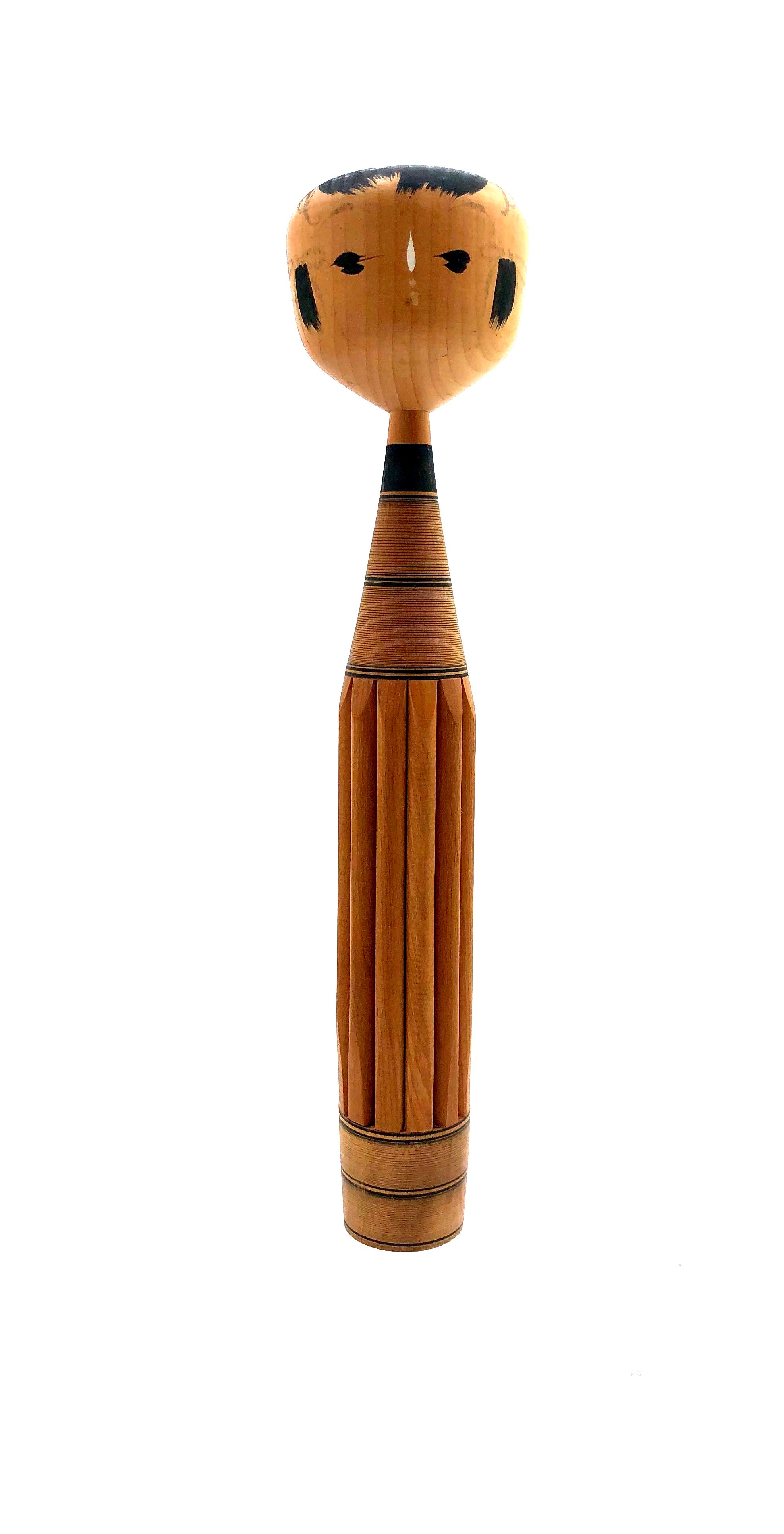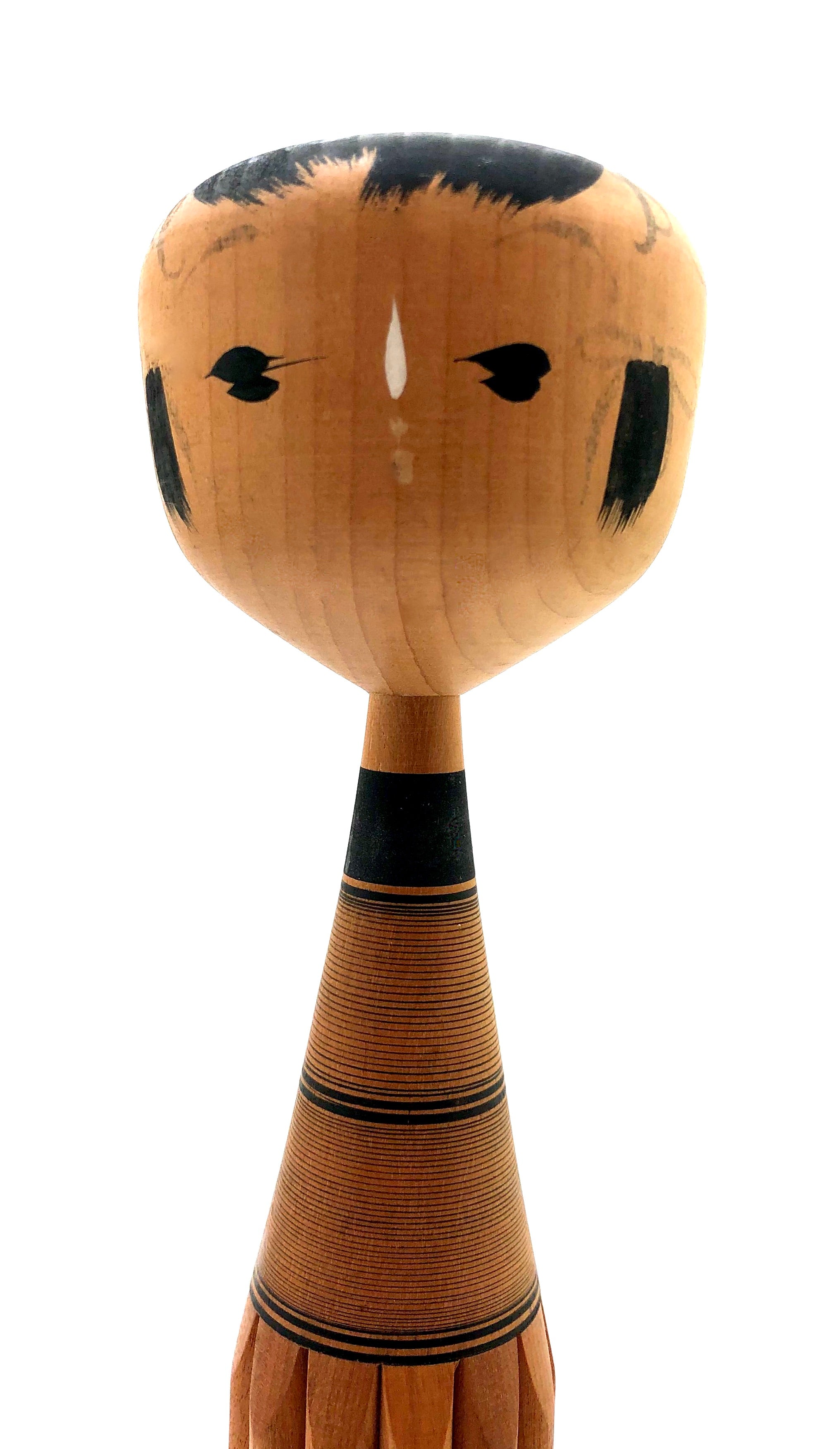

Vintage Sosaku Dowel Kokeshi | Rare Unknown Artist
Dimensions: 11-1/2”h
This is an exceptional creative (Sosaku) Kokeshi in ash wood, left natural, and finished with uncolored candle wax, (Rōsoku no rō). The head of the doll is affixed to the shoulders with a tapered form that supports a head that is wider than the rest of the doll, and more angular than round. The eyes hair and side fringes are executed using sumi-e’ drawing with a white nose to finish off the expressive face. The doll has a tapered body with interspersed decorative detailing. Beginning at the top is a black band defining the abstract interpretation of the neck of the Kimono and below is a series of extremely fine Rokoru Mayo circular-style painted lines that vary in width, and which are done as the doll is turned on the lathe. Following this decorative detail are narrow, columnar vertical dowels, which are tapered on the ends to form the lower body and represent the Kimono. Finally the base of the figure has a repeat of the Rokoru Mayo horizontal line work. This combination of hand painted and carved decorative detailing is the most unique feature of the rare doll. The piece is unsigned.
Condition: Beautiful, excellent, and perfectly balanced in original condition with no flaws or imperfections. You will find all of the artwork very striking, unusual and most interesting for Kokeshi figures. Lathe-turned wood shapes such as this piece accelerated the Japanese’s love of ‘nature-worship’, for wood has long been revered as a vehicle to house the gods and spirits of Japan’s indigenous faith, Shintoism.
NOTE: The art of Sosaku, (Creative), and modern Kokeshi doll making began in the early 1940s, grew and flourished in the 1950s-60s, and well into the 70s. The mid-50s saw the movement go beyond the few, early craftspersons of the previous decade and explode into a guild of talented wooden doll makers throughout the main island of Japan. Utilizing beautifully-grained woods available to the Kiji-shi, (wood workers), all over Japan’s northern regions, artists from backgrounds as varied as fine arts, lacquerware, painting, photography, textile design, and even chemistry and engineering, began infusing their own personalities into their dolls, allowing for immediate acceptance by a diverse national and international audience.
